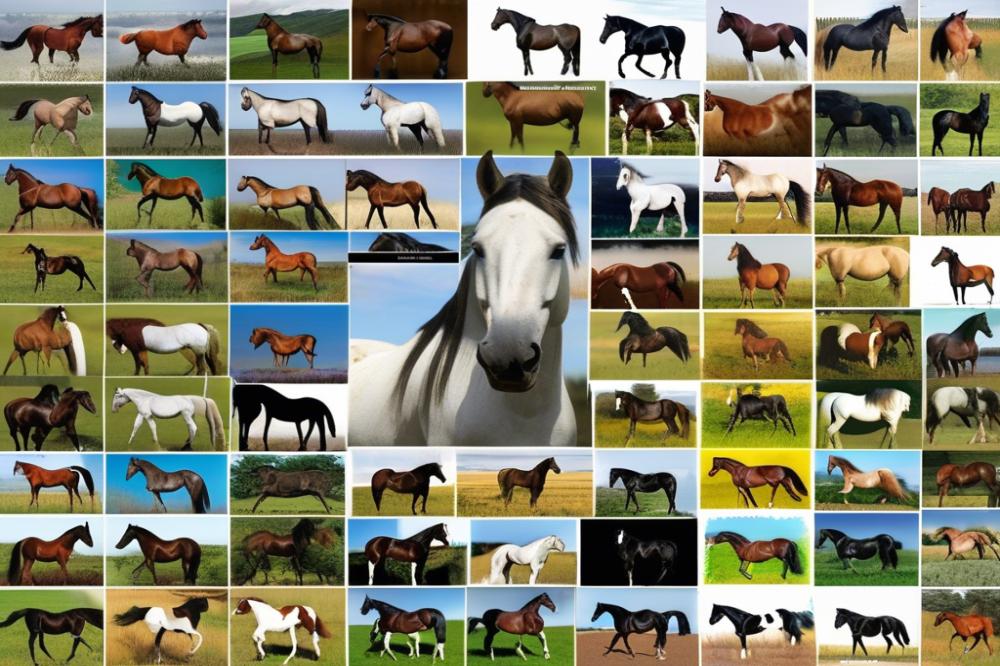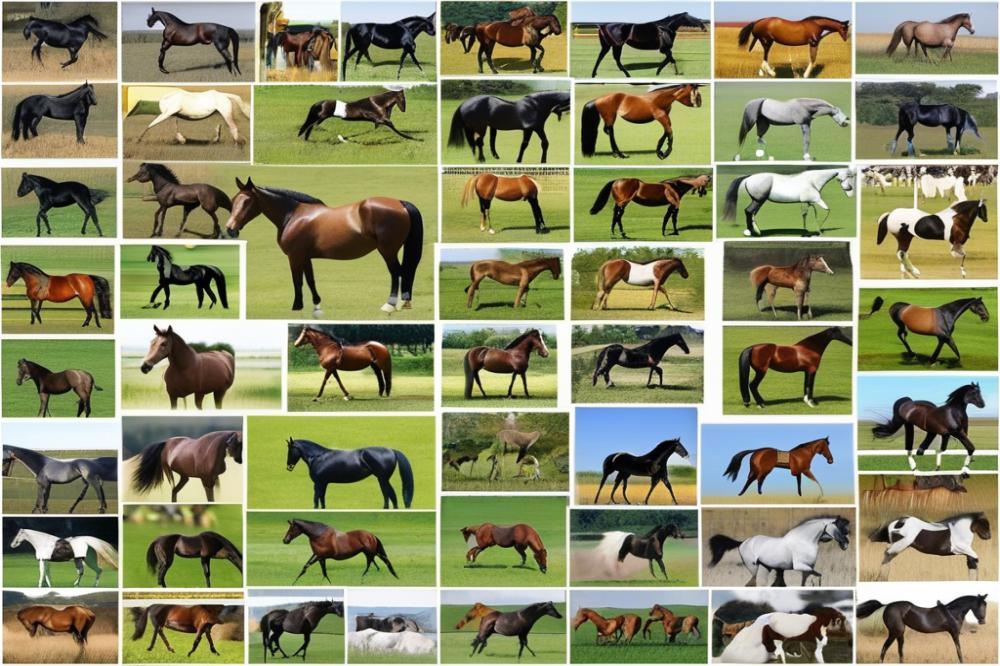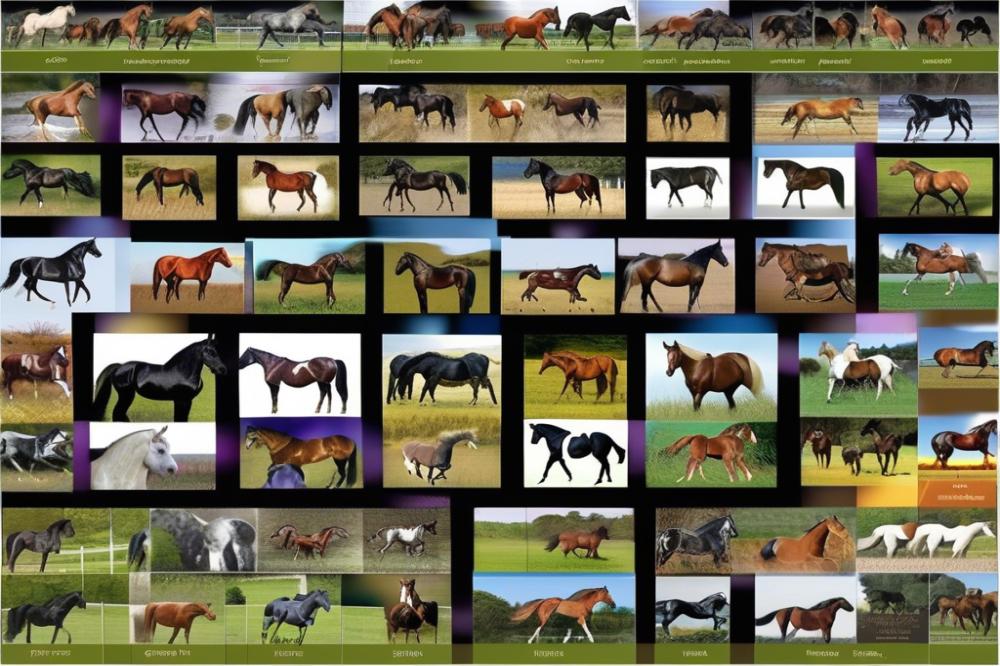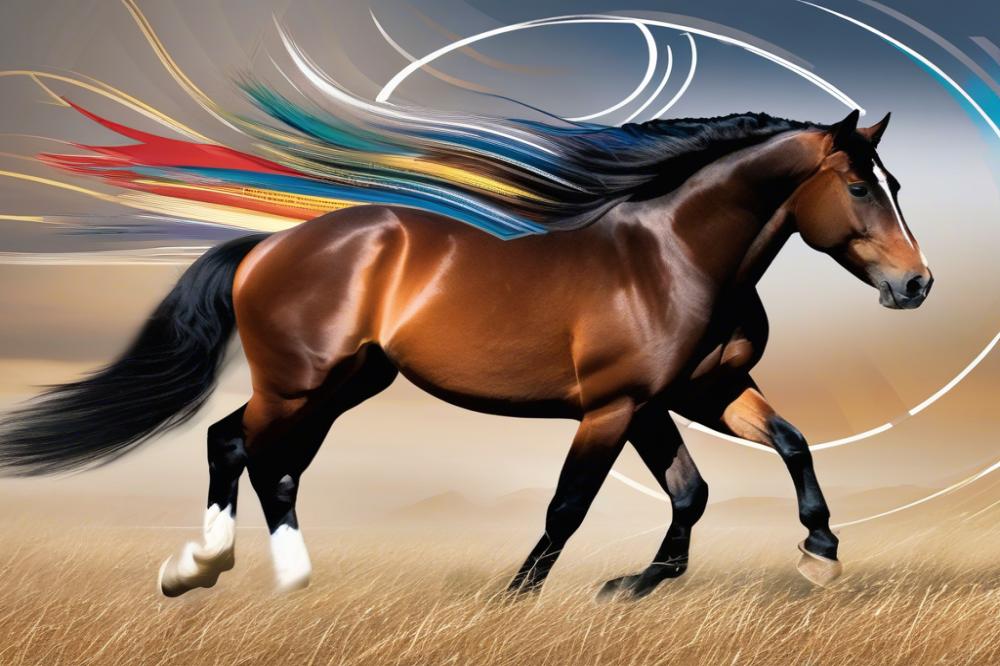Understanding genetic diversity in horse populations
genetic diversity plays a critical role in maintaining healthy horse populations. It refers to the variety of genes within a species. A diverse gene pool can lead to stronger and more adaptable animals. This adaptability is important for overcoming diseases and environmental changes. When horse populations have higher genetic variation, they are more likely to thrive over time.
This topic holds significant relevance for both horse breeding and conservation efforts. Breeders aim to enhance desirable traits while preventing inbreeding. Inbreeding can reduce genetic variation, resulting in health problems and decreasing overall population viability. conservationists also need to focus on protecting rare or endangered breeds. By understanding the genetic make-up of these animals, they can promote effective breeding programs that help preserve unique traits.
The following sections will explore various aspects of genetic diversity in horse populations. First, we will look at how it develops and what factors influence this diversity. Next, we will discuss the implications for breeding practices and how they impact the future of horses. Lastly, we will address conservation strategies that can help maintain healthy populations. Each point contributes to a deeper understanding of how to maintain the vitality of these magnificent creatures.
Understanding Genetic Diversity

Genetic diversity refers to the variety of genes within a horse population. This variation plays a vital role in the overall health of equines. When horses share a broad genetic makeup, they can adapt better to environmental changes. Strong genetic variation ensures that populations remain resilient against diseases and other challenges.
Importance lies in how this diversity affects horse well-being. Horses with varied genes often exhibit fewer health problems. These variations can influence traits like stamina, strength, and temperament. A lack of genetic variety can lead to inbreeding. Inbreeding often results in an increase in genetic disorders. Therefore, maintaining diverse gene pools is crucial for breeding healthy animals.
The Role of biodiversity in Sustaining Horse Populations
biodiversity contributes significantly to the survival of equine groups. Different traits in various horses help populations thrive in different environments. For example, some horses might excel in colder climates, while others are suited for hot regions. This adaptability is key to survival and managing climate changes.
Healthy horse populations often require multiple genes to face evolving challenges. An influx of new genes can enhance a population’s strength. It may even lead to better performance in various equestrian activities. Preserving diverse breeds also enables horse owners and breeders to maintain unique qualities.
A wide range of genes within horse populations leads to a more robust future. Sustaining genetic variation helps combat potential health and environmental issues. Thus, understanding and promoting genetic diversity is essential for the advancement and protection of our equine friends.
Genetics and Population Structure

Understanding the concept of population structure in horse breeding is essential. When horses are bred, their genetic makeup influences future generations. Breeders often focus on specific traits, which can create a more defined population with limited variation. This process can lead to a group of horses that share similar characteristics, both physically and genetically.
Genetics plays a crucial role in how populations behave and change over time. Different horses carry different genes, leading to variations in traits like size, color, and temperament. When a horse breeds within a small group, the genetic material is often limited. This situation may reduce the likelihood of new traits appearing in the offspring.
Several factors affect the genetic diversity within horse groups. One major influence is the size of the population. Larger groups usually have a broader range of genetic material. Conversely, small populations may struggle to maintain varied gene pools. Environmental factors, such as the habitat where horses live, can also impact breeding patterns. Limited social structures can isolate certain breeding groups from others.
Breeding practices further shape population dynamics. Selective breeding aims to enhance desired traits, but it can also reduce overall diversity. When certain traits are favored, less desirable characteristics may fade away, leading to issues in health and adaptability. Furthermore, human practices can restrict natural mating behaviors, creating more homogeneous populations.
In conclusion, understanding the genetics and population structure in horses reveals many complexities. The interplay of genetics, breeding choices, and environmental factors shapes the future of horse populations. Maintaining diversity is important for the health and vitality of these animals.
Ancestral Lineage and Genetic Variation

The concept of ancestral lineage plays a crucial role in breeding programs. It refers to the genetic history of a horse and how that lineage affects its characteristics. Breeders often study lineage to guide their mating choices. Choosing the right pair can enhance desirable traits. This process not only aids in improving specific qualities but also helps maintain healthy populations.
Genetic variation is essential for the strength of a breed. Horses with a diverse lineage tend to have a wider range of traits. This can lead to improved performance in various activities, including racing, jumping, or dressage. Limited genetic backgrounds might restrict the development of new skills or physical features.
Lineage impacts more than external traits. Internal factors, such as temperament and resistance to disease, can also be influenced by ancestral backgrounds. Horses that come from a line known for calmness may display less anxiety. In contrast, those from a lineage valued for speed might have more energetic temperaments.
An examination of specific breeds shows noteworthy lineage effects. Thoroughbreds, for example, have a well-documented ancestry involving selected bloodlines for speed and stamina. Arabians, with their rich history, are known for endurance traits linked closely to their ancestors. Understanding these connections helps breeders make informed decisions. Genetic traits often persist through generations, which can bolster successful breeding initiatives.
Maintaining healthy genetic variation within a breed is not merely a matter of choice; it is essential for long-term sustainability. Knowledge about lineage provides insights into potential health issues and performance capabilities. Therefore, both breeders and animal scientists must prioritize these historical relationships in their work.
The Impact of Breeding Practices
Traditional vs. Modern Breeding Practices
breeding horses has a long history. Traditional methods often focused on natural mating between horses with desirable traits. Breeders used to rely on careful selection based on lineage and performance. However, modern practices have introduced controlled breeding techniques. Artificial insemination and embryo transfer now play a role in horse reproduction. These advancements allow for a wider genetic pool. They also make it easier to select traits, but they come with risks.
Effects of Selective Breeding on Genetic Diversity
Selective breeding often targets specific characteristics. This can lead to horses that are faster, stronger, or more attractive. Unfortunately, focusing too much on specific traits can reduce the overall genetic variability in a population. When breeders only choose a few bloodlines, the gene pool shrinks. This creates problems for the long-term health of the population. Horses bred from a limited group may be more prone to genetic disorders. In some cases, this can lead to serious health issues down the line.
Importance of Maintaining Genetic Health Through Responsible Breeding
Keeping a broad genetic base is crucial for horse populations. Responsible breeding practices help maintain genetic health. Diversifying breeding stock can introduce new traits and resilience. It can also help prevent inbreeding depression. This term refers to reduced biological fitness due to breeding closely related animals. Some breeders now focus on preserving unique traits from various breeds. They realize the value of genetic health and its impact on overall vitality. By using responsible methods, breeders can support a healthy population for the future.
Hybrid Vigor and Its Benefits
Hybrid vigor, often referred to as heterosis, describes the phenomenon where crossbred individuals exhibit improved biological qualities compared to their purebred counterparts. In horse populations, this concept plays a crucial role in enhancing health and performance. When two genetically diverse horses mate, their offspring can inherit the best traits from both parents.
One significant advantage of hybrid vigor is enhanced health. Horses born from crossbreeds often show greater resilience against diseases. This improved immunity results from a broader genetic pool that reduces the chance of inherited disorders. In some cases, crossbred horses demonstrate superior physical attributes, such as better stamina and strength. Increased vigor often leads to more athletic and durable animals.
Performance can also see marked improvements thanks to hybrid vigor. Horses bred from diverse lineages may excel in various equestrian disciplines. They often showcase a blend of qualities like speed, agility, and trainability. Such mixed traits allow these horses to perform well in competitive environments.
To utilize hybrid vigor effectively in breeding programs, careful selection of breeding pairs is essential. Lineage should be considered to maximize genetic differences while choosing horses with desirable qualities. Additionally, breeders may consider introducing new bloodlines to enhance overall fitness. Keeping detailed records of horse lineage can aid in making informed breeding decisions.
This approach not only improves individual horse performance but can also benefit the overall population. By fostering a more heterogeneous genetic background, breeders can contribute to stronger and healthier horse populations. Ultimately, embracing hybrid vigor can lead to a brighter future for horse breeds worldwide.
Conservation Efforts and Future Directions
Current strategies for conserving horse populations largely focus on maintaining genetic diversity. Several organizations work to protect endangered breeds through breeding programs. These programs can involve artificial insemination, which helps to widen the gene pool. Another method includes habitat preservation, ensuring that horses have enough land to roam and graze.
Preserving rare breeds of horses carries great importance. Some breeds are at risk of extinction, which could lead to a loss of valuable traits. Each breed contributes unique characteristics to the equine world. Farmers and breeders benefit from this diversity for future agricultural practices. Maintaining this richness is critical for various equestrian disciplines.
Future Directions in Breeding and Conservation
Among future efforts, genetic research will play a vital role. Scientists are studying DNA to better understand horse lineages and relationships. This knowledge will guide breeding practices and help prevent inbreeding. By using technology, breeders can select horses that possess desirable traits while keeping the gene base broad.
Innovative breeding techniques could become more common. Embryo transfer or cloning might help introduce rare genes into larger populations. However, ethical considerations must be taken into account with these methods. Balancing the benefits of technology with the natural process of breeding is essential.
Public awareness and engagement are equally crucial. Educating horse owners about the significance of genetic health can drive grassroots conservation efforts. Many enthusiasts might not realize the value of their horses’ lineage. Promoting the understanding of breed preservation can lead to more support.
Collaboration among various stakeholders can amplify conservation results. Organizations, breeders, and researchers should work together toward common goals. Sharing information and resources can enhance efforts to protect vulnerable breeds. Together, stakeholders can address the challenges posed by climate change and habitat loss.
In conclusion, recognizing the issues surrounding horse populations is vital. Focused conservation strategies can deliver better outcomes. The future of equine genetics will depend on smart choices made today.
Wrapping Up the Importance of Genetic Variation
Understanding the variations within horse populations is vital for their health and future. Genetic diversity plays a key role in the overall resilience of a species. Horses with a wide range of genetic traits are better equipped to survive changes in environment and health challenges. Breeders who grasp this concept will contribute to a stronger equine community.
Responsible breeding practices are essential in maintaining these variations. By selecting breeding pairs carefully, breeders can promote a mix of traits. Avoiding inbreeding and focusing on health, temperament, and performance will help prevent genetic disorders. This proactive approach encourages not just the survival of the species, but also its flourishing.
Looking ahead, the future of genetic diversity within horse populations is hopeful. There are ongoing efforts in conservation that aim to protect rare breeds and promote habitats that support these animals. With informed stewardship, we can celebrate a more biodiverse equine world, filled with strong and healthy horses. Engaging the community in these discussions can further amplify our efforts, making a collective impact on this cherished species.



